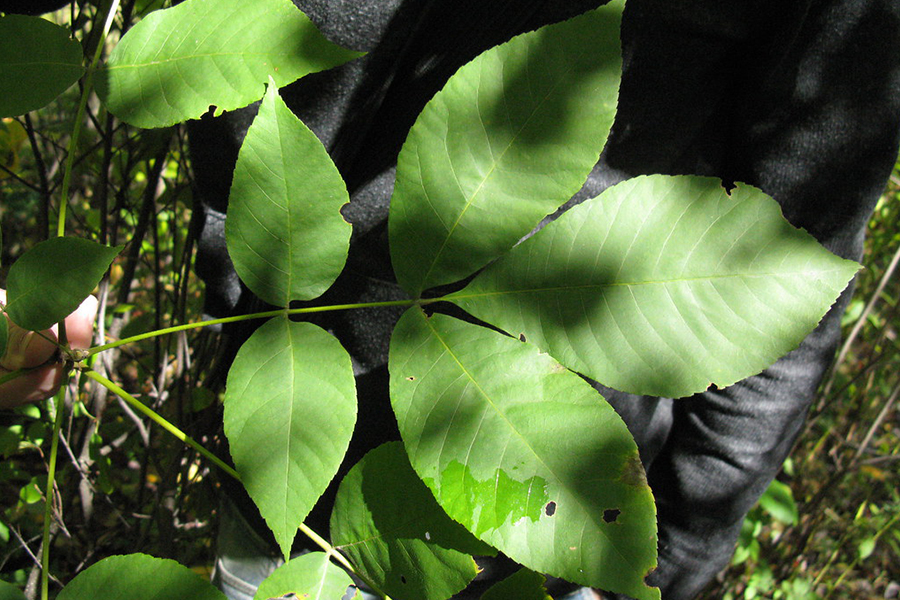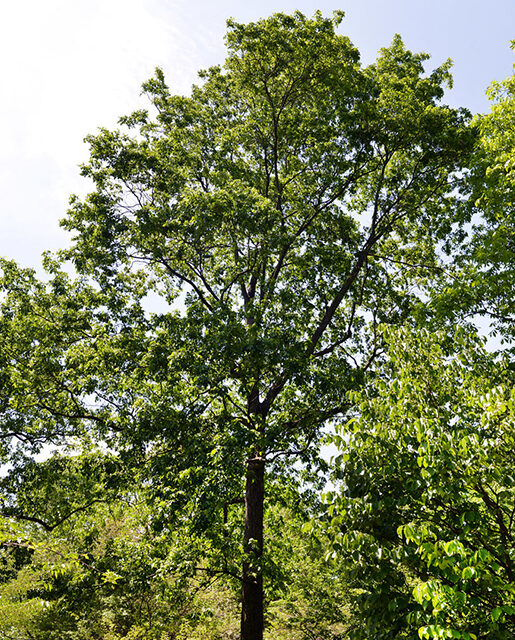Carya glabra
Pignut hickory is a deciduous tree widely distributed throughout the United States. The small nuts of the hickory are an important food source for many animals and its wood is sometimes used for smoking meats.
Location
Wander from Lovell Street up Appleton Road and you might spot two! One resides by the crossroads with the East-West trail, and another as you approach the exit to the Magnolia trail.


History at Hadwen
The pignut hickory was first recorded in the arboretum during a 1971 project, “Special Problems in Botony,” undertaken by Dean Vernon Ahmadjian to determine the present status of the Hadwen Arboretum. Pignut hickories were documented again in 1978 and 2020.
Keep Learning
Detailed Species Information
Pignut hickory is a deciduous tree in the family Juglandaceae native to eastern North America. The pignut hickory typically can grow up to 60–90 feet (18–27 meters) tall and 36 to 48 inches (122 centimeters) in trunk diameter. The bark is grayish-brown, with shallow ridges that form a diamond pattern with age. The green leaves are compound and alternately arranged on the stem. Each leaf has five to seven long, almond-shaped leaflets which turn yellow in the fall.
Pignut hickory prefers upland, well-drained soils, and is commonly found in mixed hardwood, late succession forests despite being shade intolerant. It is an important food source for many species of wildlife, with the nuts providing food for bears, deer, songbirds, turkeys, and many small mammals. Pignut hickory wood is durable but flexible and is often used as firewood and for smoking meats. Additionally, the tree is sometimes used in landscaping as a shade tree but is rarely used as an ornamental due to the difficulty of transplanting.
